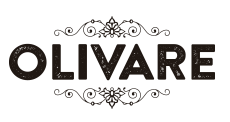Choosing a Niche for Your Blog
Starting a blog requires identifying a niche that aligns with your interests and expertise. Whether you’re passionate about travel, fitness, or technology, choosing a niche helps attract a targeted audience. Research trending topics using tools like Google Trends to ensure there’s demand. This decision sets the foundation for your blog and influences everything from content creation to SEO strategies.
Selecting a Blogging Platform
Once your niche is defined, select a blogging platform. WordPress, Blogger, and Medium are popular choices. WordPress offers flexibility for blog design and advanced customization, making it ideal for those seeking full control. Consider ease of use, scalability, and plugin compatibility when deciding. Platforms like WordPress also integrate seamlessly with SEO strategies, helping your blog rank higher in search engines.
Registering a Domain Name
Your domain name is your blog’s online identity. Choose a name that reflects your niche and is easy to remember. Use domain registrars like GoDaddy or Namecheap to check availability. A professional domain name enhances credibility and makes it easier for readers to find your blog through SEO strategies.
Picking a Web Hosting Service
After securing a domain, select a reliable web hosting service. Shared hosting is cost-effective for beginners, while VPS or dedicated hosting suits growing blogs. Look for providers offering uptime guarantees, customer support, and scalability. For additional resources, visit https://getlinks4you.com/.
Designing Your Blog’s Layout
Blog design impacts user experience and readability. Use themes that match your brand and ensure mobile responsiveness. A clean layout with intuitive navigation encourages visitors to stay longer. Prioritize fast loading times, as this affects both user engagement and SEO strategies.
Creating High-Quality Content
Content creation is the heart of any successful blog. Focus on delivering value through informative posts, tutorials, or personal insights. Use keywords strategically to improve visibility, and maintain a consistent tone aligned with your niche. Quality content builds trust and keeps readers coming back for more.
Optimizing for Search Engines (SEO)
Implementing SEO strategies ensures your blog reaches a wider audience. Optimize titles, meta descriptions, and headers with relevant keywords. Use tools like Yoast SEO or SEMrush to analyze performance. Regularly update content to align with evolving search trends and algorithm changes.
Setting Up Analytics and Monitoring Tools
Track your blog’s performance using analytics tools like Google Analytics. Monitor traffic sources, user behavior, and conversion rates to refine your blogging tips. These insights help identify what works and what needs improvement, allowing you to adjust your SEO strategies effectively.
Engaging With Your Audience
Building a community around your blog strengthens reader loyalty. Respond to comments, ask for feedback, and create interactive content like polls or Q&A sessions. Engagement fosters repeat visits and increases social sharing, which supports your overall growth and SEO efforts.
Monetizing Your Blog
Once your blog gains traction, explore monetization methods such as affiliate marketing, sponsored posts, or selling digital products. Ensure these approaches align with your niche and don’t compromise your blog’s integrity. Diversify income streams to sustain long-term success.
Staying Consistent and Updating Regularly
Consistency is key to maintaining reader interest and improving SEO rankings. Set a realistic posting schedule and stick to it. Regular updates keep your content fresh and signal to search engines that your blog is active and valuable.
Tips for Growing Your Blog’s Traffic
Leverage blogging tips like guest posting, email newsletters, and collaborating with influencers. Promote your content on forums and social media to expand reach. Utilize SEO strategies to target long-tail keywords and improve organic traffic over time.
Common Mistakes to Avoid When Starting a Blog
Avoid common pitfalls like neglecting SEO, ignoring audience feedback, or launching with low-quality content. Rushing the process can harm your blog’s reputation. Take time to plan, research, and refine your approach for sustainable growth.
Using Social Media to Promote Your Blog
Social media platforms like Instagram, Twitter, and LinkedIn are powerful tools for promoting your blog. Share snippets of your content, engage with followers, and use hashtags to increase visibility. Tailor your approach to each platform’s audience to maximize impact.
Backing Up Your Blog Data Regularly
Protect your blog from data loss by scheduling regular backups. Most hosting providers offer automated backup solutions, but manually backing up files and databases adds an extra layer of security. This practice ensures you can restore your blog quickly in case of technical issues.
Legal Considerations for Bloggers
Familiarize yourself with copyright laws, privacy policies, and disclosure guidelines. Always credit sources, use disclaimers for affiliate links, and comply with regulations like GDPR. Addressing legal aspects early prevents potential disputes and maintains your blog’s credibility.
- Conduct keyword research to enhance SEO strategies.
- Invest in blog design that prioritizes user experience.
- Use blogging tips to streamline content creation and promotion.
